Just like the birds themselves, birders have certain habits and habitat preferences at certain times of the year, almost reliably so. When August rolls around, most birders will seek out a good mudflat for some shorebird action. For me, though, my preferred birder habitat for August looks something like this:
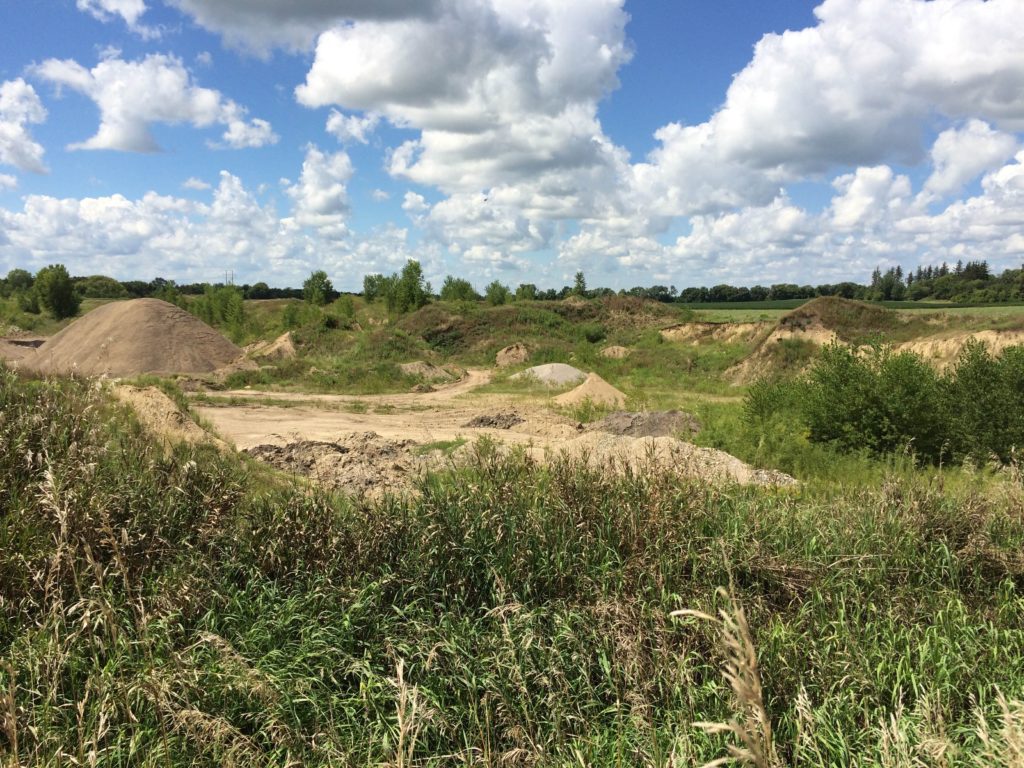
I explore gravel pits like this and other scrub lands in the hopes of finding one bird:
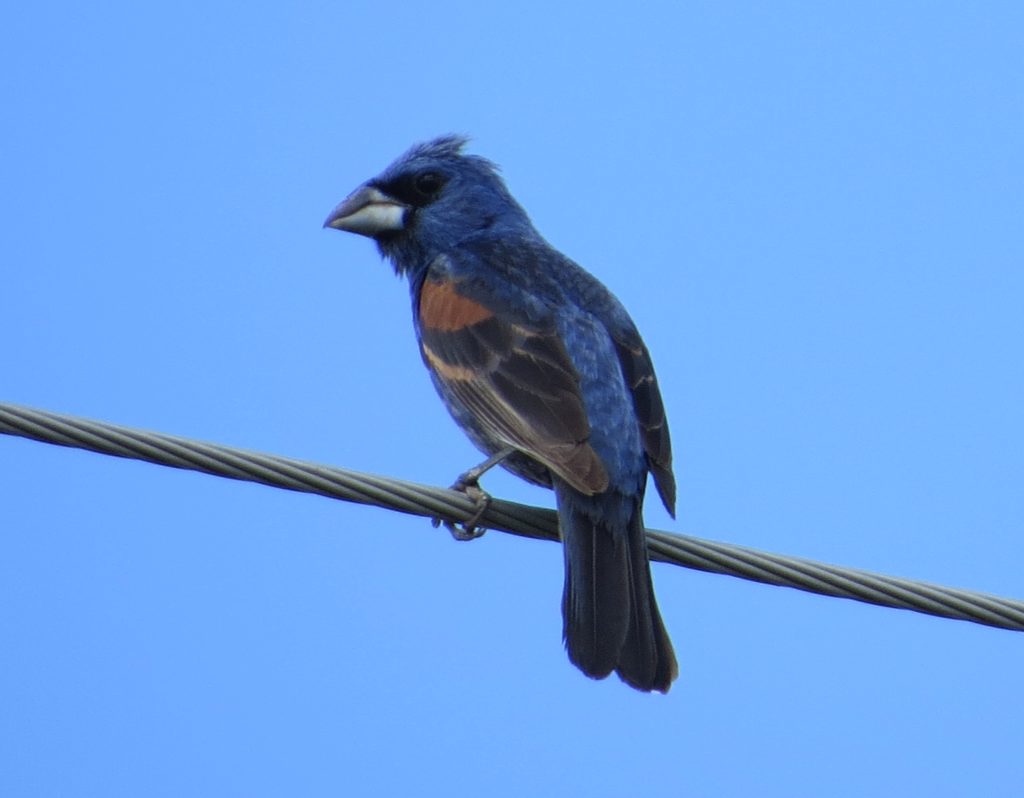
The Blue Grosbeak and its apparent range expansion fascinate me, especially since this bird has now been documented within just three miles of my home county, Kandiyohi. I became interested in this range expansion back in 2014 when it seemed there were more and more reports of these birds outside of their stronghold at Blue Mounds State Park in Rock County, the very southwestern corner of the state. Here is what the Blue Grosbeak eBird map looked like back in 2000.
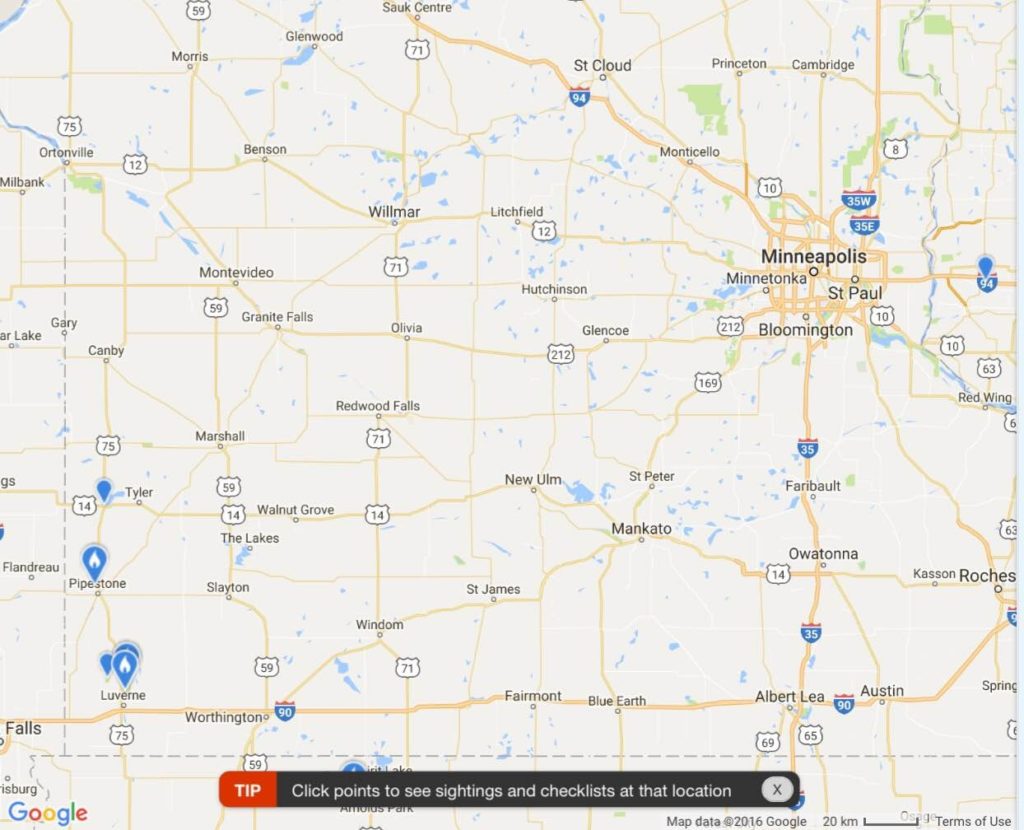 Fast forward to 2012, and it looked like this:
Fast forward to 2012, and it looked like this:
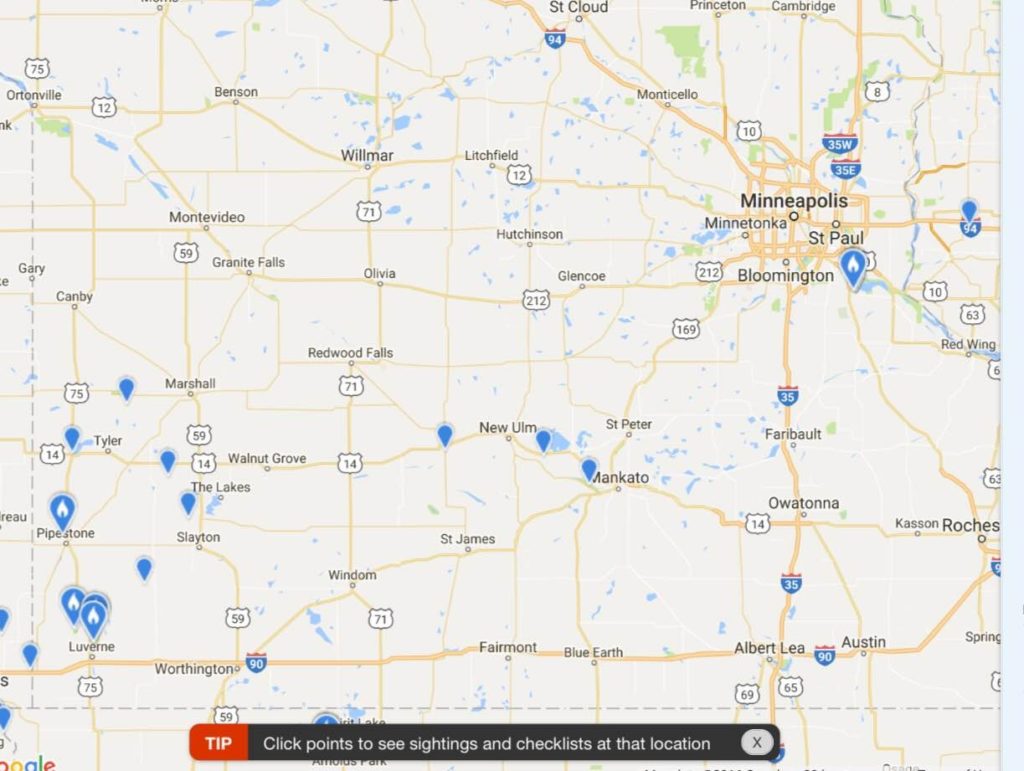 This uptick in Blue Grosbeak observations on eBird can partly be attributed to the beginning of eBird’s popularity in Minnesota and the tenacious efforts of people like Garrett Wee and Doug Kieser. Many of Minnesota’s experienced birders do not use eBird and have also been turning up Blue Grosbeaks outside of the “normal” Minnesota range of Rock County for years. But even some of these birders have told me that the Blue Grosbeak has definitely expanded its range and its numbers in Minnesota.
This uptick in Blue Grosbeak observations on eBird can partly be attributed to the beginning of eBird’s popularity in Minnesota and the tenacious efforts of people like Garrett Wee and Doug Kieser. Many of Minnesota’s experienced birders do not use eBird and have also been turning up Blue Grosbeaks outside of the “normal” Minnesota range of Rock County for years. But even some of these birders have told me that the Blue Grosbeak has definitely expanded its range and its numbers in Minnesota.
In 2014 when I became interested in this expansion, I used satellite imagery on Google Maps and eBird to find probable sites in northern Renville County. I was interested in Renville County because it bordered my home county of Kandiyohi, it was at the northeastern fringes of the Minnesota range for this bird, and because Joel Schmidt and Randy Frederickson saw a family group of Blue Grosbeaks in this area in 2012. So in using the satellite photos, I looked for new sites that showed gravel pits or any kind of disturbed earth. The success of that endeavor surpassed my expectations as I turned up four Blue Grosbeaks in four separate locations spanning a total of three miles. Other birders who followed up on my reports added even more Blue Grosbeaks. Not only did it appear the Blue Grosbeak had extended its range to northern Renville County, but it was thriving there. If you want to read my account of that Blue Grosbeak investigation, click here.
2015 was a bit of a disappointing year because I could not find Blue Grosbeaks at any of the sites I found them in 2014. Even still, I added one brand new Blue Grosbeak site in Renville County in 2015, and even more exciting was that Ron Erpelding and others found more Blue Grosbeaks north and west of the pocket of birds I found. This put Blue Grosbeaks within about three miles of the southwestern corner of Kandiyohi County. Here is the map to this day: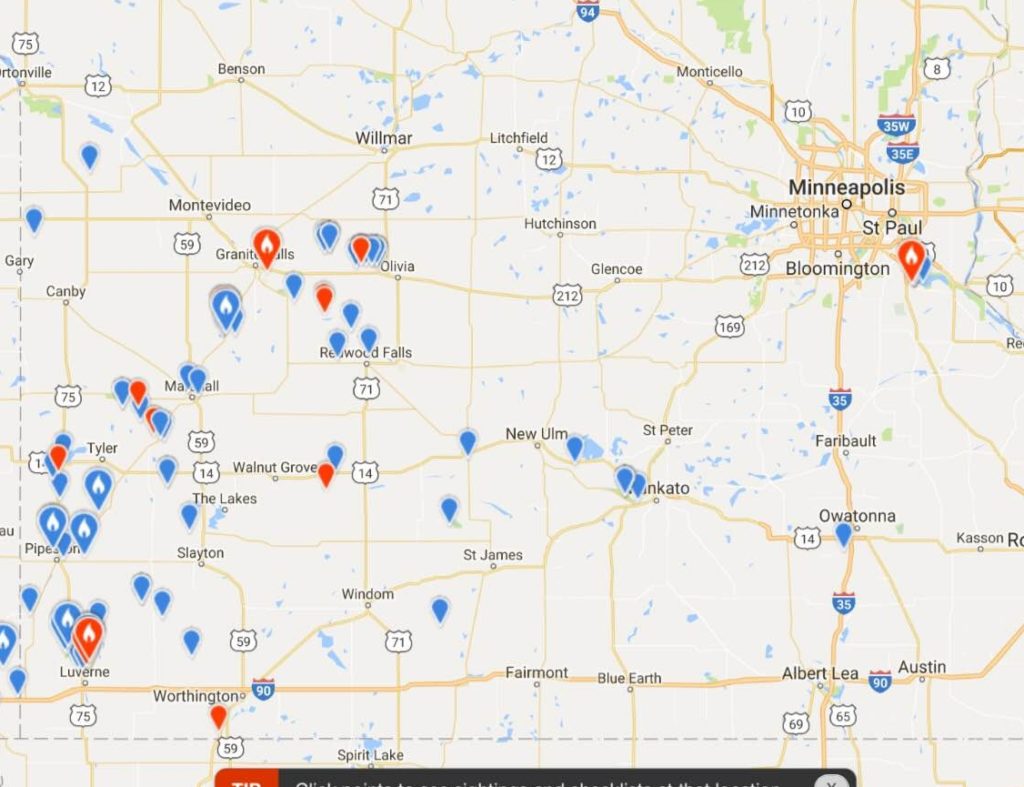
As you can see by the red markers, 2016 has been a good year too. Here’s a close-up of the area I’m interested in.
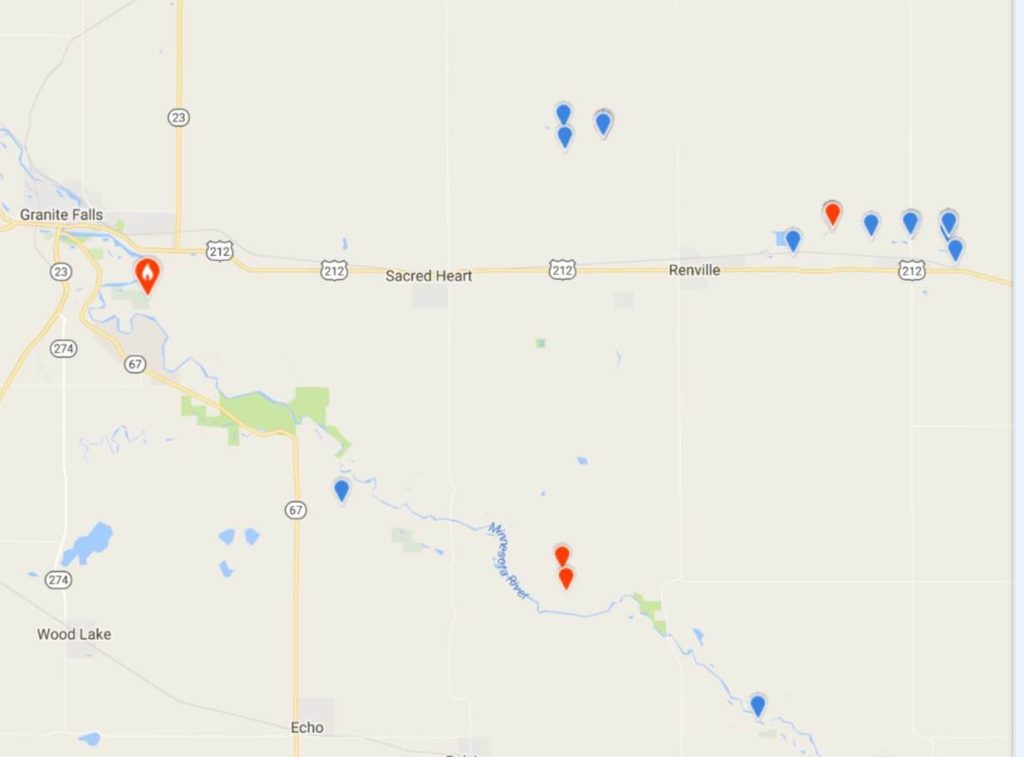
Even though this year’s recheck of the 2015 sites turned up negative, there has been a lot happening this past week in the hunt for Blue Grosbeak. A week ago I guided Pete Nichols and Ben Douglas around Chippewa and Renville Counties in the hopes of getting their BLGR state bird and life bird respectively, and we found two males at one of the 2014 sites! I was thrilled; they were thrilled. There was much high-fiving, especially since we got the bird at the last possible second before Pete and Ben had to leave.
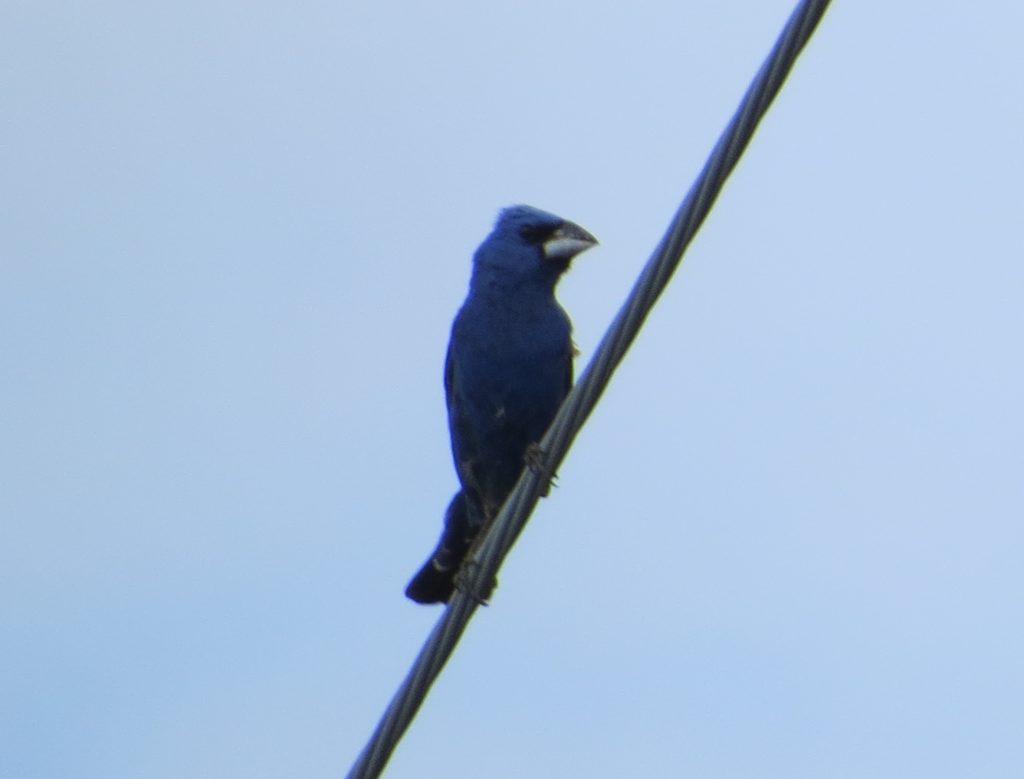
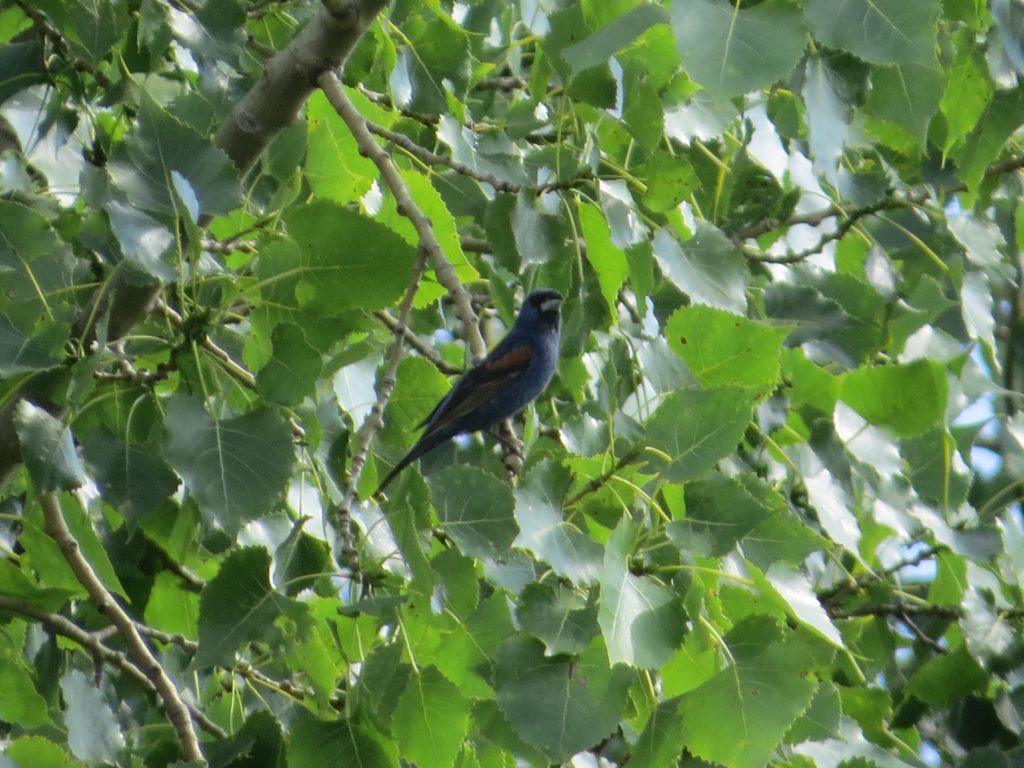 So that explains one of the red markers. Here’s the story (and photos) of the others. A couple days after the Renville sighting with Pete and Ben, I went to Gneiss Outcrops SNA in the very southeastern corner of Chippewa County to follow up on Bill Marengo’s earlier report of a Blue Grosbeak. Ron Erpelding and Herb Dingmann had found one here in 2014 that I was unsuccessful at relocating that same summer. However, I was able to find Bill’s bird this year.
So that explains one of the red markers. Here’s the story (and photos) of the others. A couple days after the Renville sighting with Pete and Ben, I went to Gneiss Outcrops SNA in the very southeastern corner of Chippewa County to follow up on Bill Marengo’s earlier report of a Blue Grosbeak. Ron Erpelding and Herb Dingmann had found one here in 2014 that I was unsuccessful at relocating that same summer. However, I was able to find Bill’s bird this year.
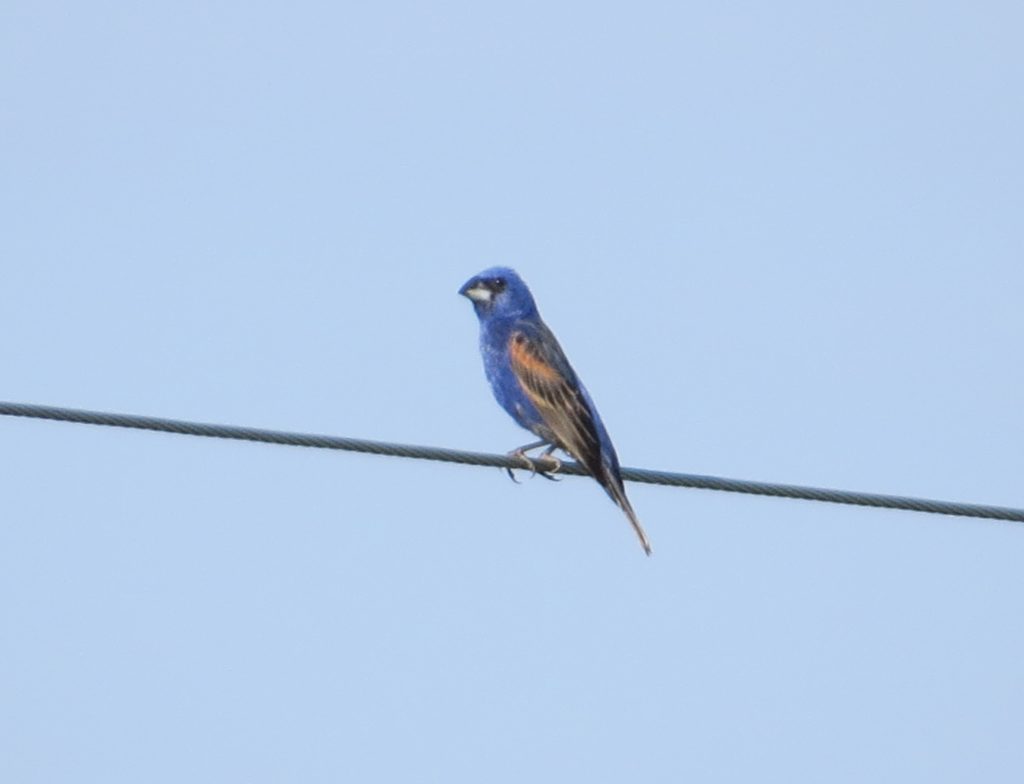
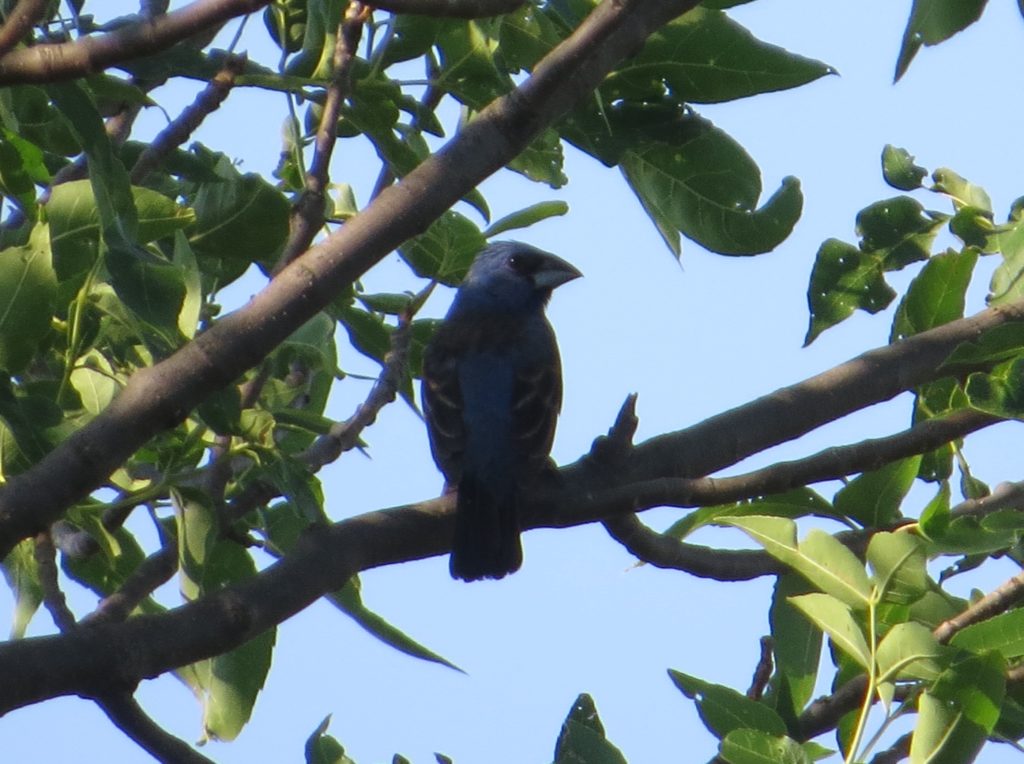 And just yesterday I checked some new-to-me sites in southern Renville County where birds had been reported by others in 2012 and 2013. It was a very successful recheck. At the gravel pit on 200th St (pictured at the beginning), I found this Blue Grosbeak and heard a second male.
And just yesterday I checked some new-to-me sites in southern Renville County where birds had been reported by others in 2012 and 2013. It was a very successful recheck. At the gravel pit on 200th St (pictured at the beginning), I found this Blue Grosbeak and heard a second male.
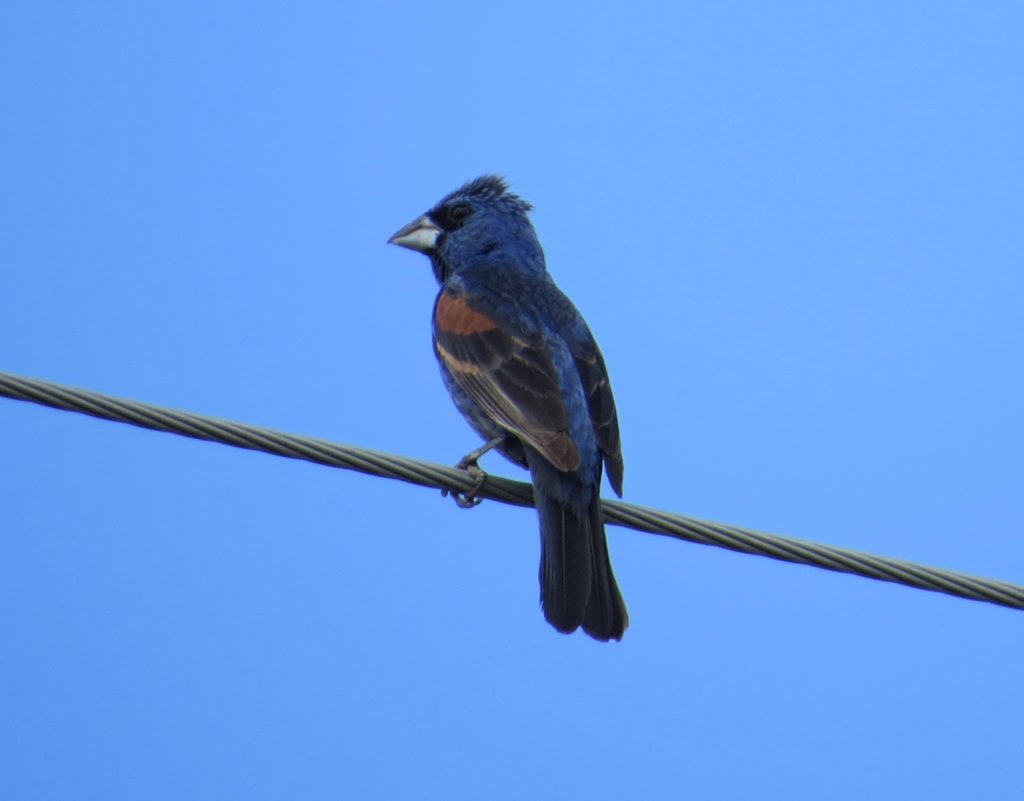
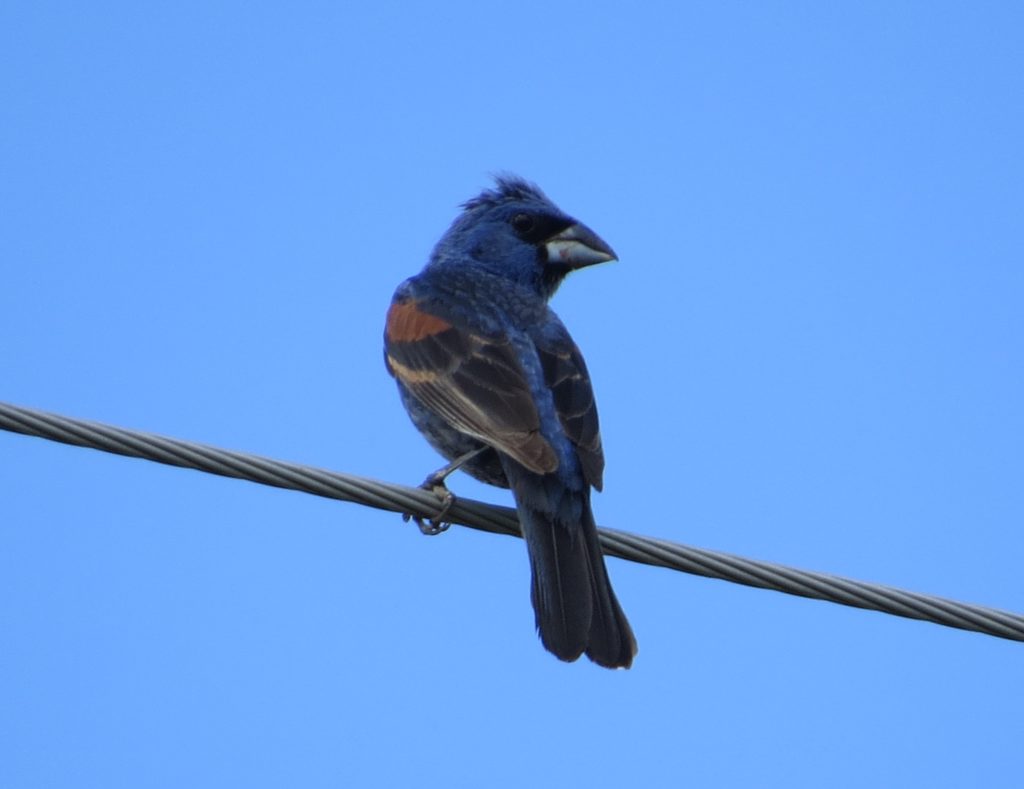
Not long after that and over a half mile from these two birds, I spied a suspicious-looking silhouette on a wire. It turned out to be yet another Blue Grosbeak!
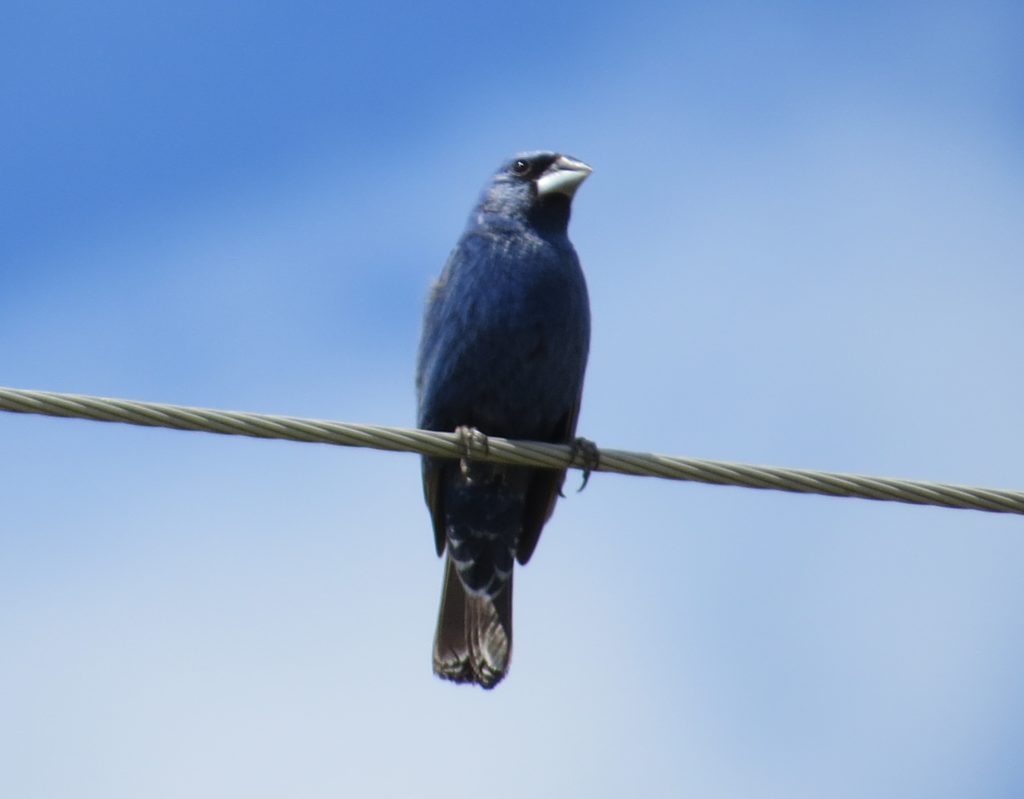 Finding five Blue Grosbeaks in Renville County and one in Chippewa County this past week has re-energized my interest in this bird’s range and population expansion. Lately I’ve started to think that gravel waste sites are not necessarily the only factor in finding this bird. I think proximity to water is a key element. Thinking back on all the Blue Grosbeaks I’ve found, there has either been a pond, a drainage ditch, or stream/river in very close proximity to the birds. This bird is often found in riparian areas in the south. I’m even wondering if water has actually been the cause of its range expansion. Could the river valleys and streams actually serve as conduits for its range expansion? Consider the stronghold of Rock County where the first MN Blue Grosbeaks were found–the Rock River runs right through it and the Big Sioux River that runs through Sioux Falls (a stronghold for BLGR sightings) is not far from there either. Then consider the Minnesota River Valley. Many Blue Grosbeak sightings have happened along the valley from Granite Falls all the way down to Mankato. Even the far northern sightings in Lac qui Parle County are within 30 miles of the Minnesota River. The pocket of birds I found in 2014 is about 12 miles from the MRV, so now when I look at satellite photos of the landscape, I get curious. Did the northern Renville County birds come up from the MRV along the creeks and drainage ditches?
Finding five Blue Grosbeaks in Renville County and one in Chippewa County this past week has re-energized my interest in this bird’s range and population expansion. Lately I’ve started to think that gravel waste sites are not necessarily the only factor in finding this bird. I think proximity to water is a key element. Thinking back on all the Blue Grosbeaks I’ve found, there has either been a pond, a drainage ditch, or stream/river in very close proximity to the birds. This bird is often found in riparian areas in the south. I’m even wondering if water has actually been the cause of its range expansion. Could the river valleys and streams actually serve as conduits for its range expansion? Consider the stronghold of Rock County where the first MN Blue Grosbeaks were found–the Rock River runs right through it and the Big Sioux River that runs through Sioux Falls (a stronghold for BLGR sightings) is not far from there either. Then consider the Minnesota River Valley. Many Blue Grosbeak sightings have happened along the valley from Granite Falls all the way down to Mankato. Even the far northern sightings in Lac qui Parle County are within 30 miles of the Minnesota River. The pocket of birds I found in 2014 is about 12 miles from the MRV, so now when I look at satellite photos of the landscape, I get curious. Did the northern Renville County birds come up from the MRV along the creeks and drainage ditches?
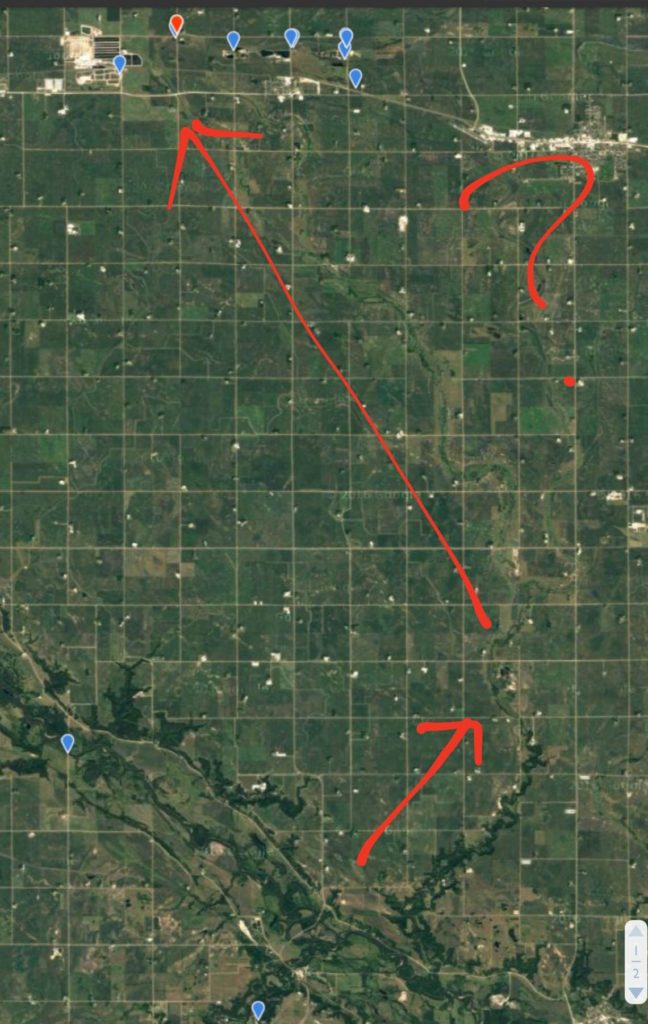
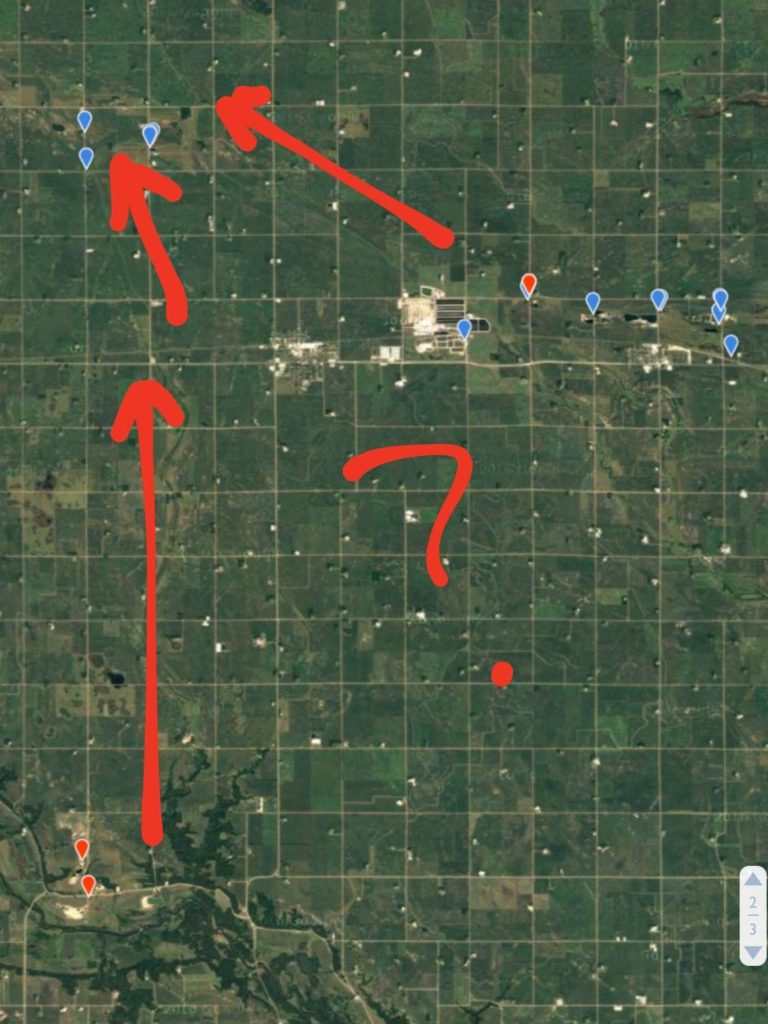
Could the Minnesota River playing a key role in the expansion of the Blue Grosbeak’s range across the entire state? Or is something more random going on? Right now this is just an idea that gets me out looking for Blue Grosbeaks and other birds in new locations. I get excited when I look at satellite imagery of Minnesota River tributaries and see stuff like this:
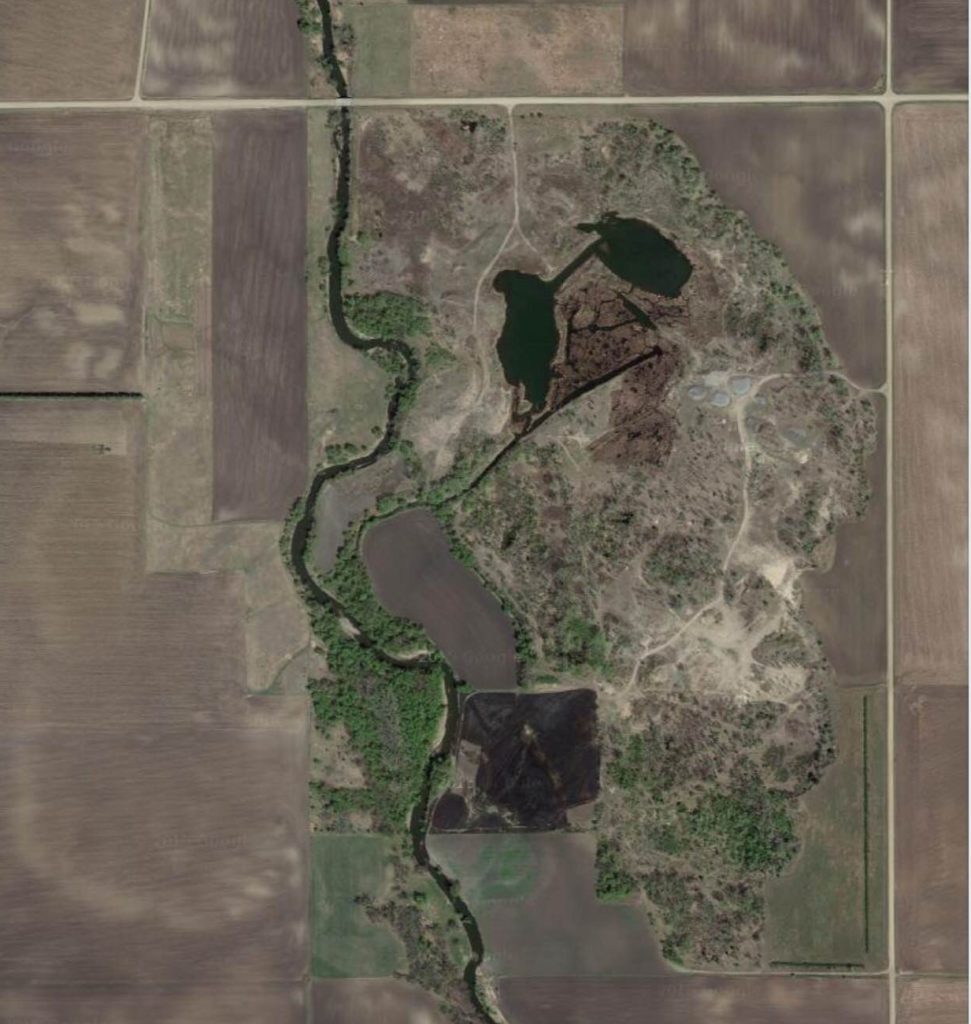 This spot turned out to be negative, by the way, at least from what I could hear/see from the roads during my brief check. However, there are a LOT of places where the roads transect these creeks and ditches in Renville County, so there are a lot of places to check. While I have found Blue Grosbeaks in gravel pits, I do not think that is the exclusive habitat preference for this bird. They are described in some literature to be habitat generalists that will occupy a variety of habitats in the southern U.S. where they are much more common. I would think any brushy or waste area in this bird’s Minnesota range could be good, especially the more numerous they become. One of the 2015 sites I was most excited about was just an ordinary farm yard.
This spot turned out to be negative, by the way, at least from what I could hear/see from the roads during my brief check. However, there are a LOT of places where the roads transect these creeks and ditches in Renville County, so there are a lot of places to check. While I have found Blue Grosbeaks in gravel pits, I do not think that is the exclusive habitat preference for this bird. They are described in some literature to be habitat generalists that will occupy a variety of habitats in the southern U.S. where they are much more common. I would think any brushy or waste area in this bird’s Minnesota range could be good, especially the more numerous they become. One of the 2015 sites I was most excited about was just an ordinary farm yard.
What does all this mean for Minnesota birders?
If you are birding anywhere south and just barely north of the Minnesota River that cuts through Minnesota like a giant V, Blue Grosbeaks should be on your radar as a possibility even if the habitat doesn’t have the classic “feel” of being an exposed gravel/waste area. Doug Kieser wrote in one of his eBird reports this summer that he was surprised to find a PAIR of Blue Grosbeaks while scanning a mowed hay field of all places. Most of us would be surprised because, through our Minnesota experiences with this bird, we tend to associate Blue Grosbeaks with their more typical habitat. Those more typical habitats south and barely north of the Minnesota River should ESPECIALLY be looked over carefully. Anywhere there are municipal brush sites, sewage lagoons, rock outcroppings, landfills, brush-filled drainage ditches and creeks, and yes, gravel pits, you may just find a brand new Blue Grosbeak.
Besides habitat/location, what else could help a Blue Grosbeak search be successful?
- Learn the song well. It’s pretty distinctive. Most of the Blue Grosbeaks I have found have been by hearing these loud singers first.
- If you are lucky enough to hear one, scan the tops of shrubs, trees, and other perches. They are conspicuous birds that often sing from high, open perches.
- Know the profile. This is something I have just keyed into lately that has helped me spot three non-singing Blue Grosbeaks from a distance, sometimes in bad light. Blue Grosbeaks have a near vertical posture when sitting on a wire, and they appear very top-heavy with that short tail. Their big, blocky head also helps set them apart from other wire-perching birds. Then there’s that massive, conical bill…
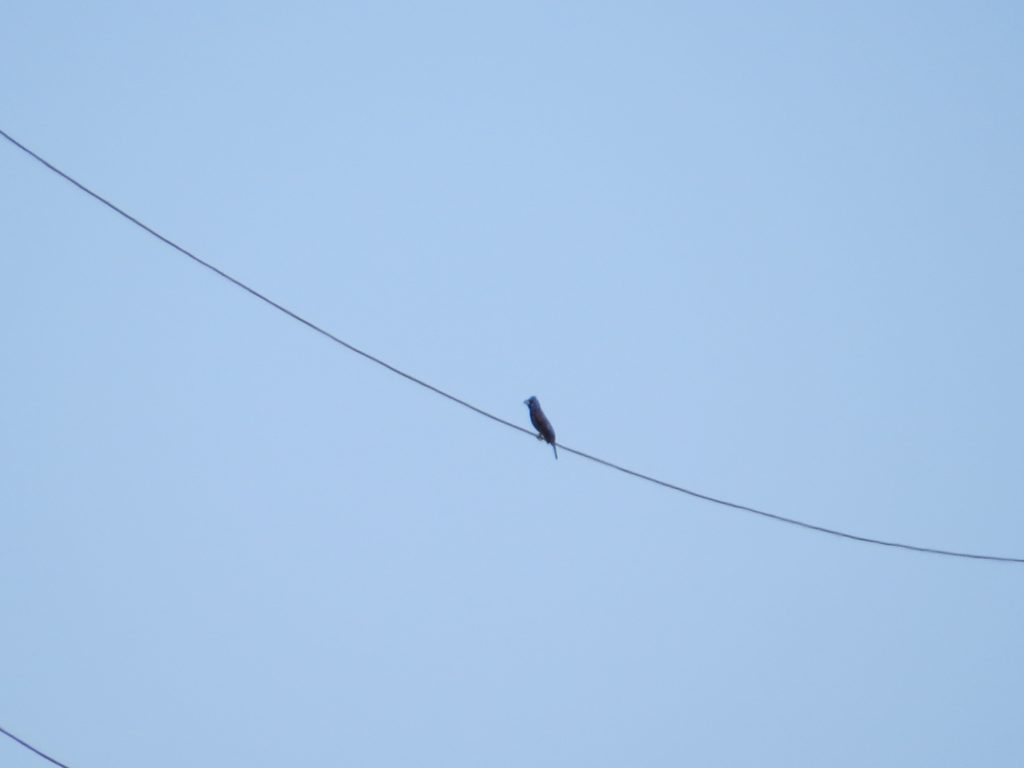 4. Don’t think of them as a rare bird in the previously described areas of Minnesota. If you expect to see them, you are more likely to stop the car to investigate a bird on a wire or drive slowly by a shrubby pasture with the windows down to listen for one. True story: I have seen/heard 11 Blue Grosbeaks in Renville County compared to just 2 Eastern Towhees there, yet the Blue Grosbeak is still considered rare in that county by eBird while the Towhee is an expected species.
4. Don’t think of them as a rare bird in the previously described areas of Minnesota. If you expect to see them, you are more likely to stop the car to investigate a bird on a wire or drive slowly by a shrubby pasture with the windows down to listen for one. True story: I have seen/heard 11 Blue Grosbeaks in Renville County compared to just 2 Eastern Towhees there, yet the Blue Grosbeak is still considered rare in that county by eBird while the Towhee is an expected species.
Final Thought
Most of the Blue Grosbeaks sightings on eBird are fairly well pinpointed and therefore chaseable. And, if you’ve never seen one before, by all means, go look for one of those. But if you have seen one already, strike out on your own and turn up a brand new Blue Grosbeak. I guarantee you’ll have a lot more fun exploring and discovering something new than chasing something old. Who knows, you may have one a lot closer to home than you thought!
